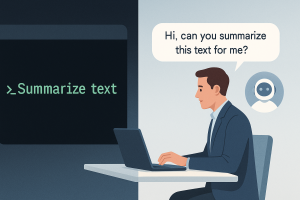
The Imperative of Ethical Guardrails in AI Development: Balancing Innovation with Responsibility
As Artificial Intelligence, or AI, becomes a bigger part of our daily lives, it opens up exciting opportunities to make tasks easier and faster, from medical advancements to personalized learning. But just like any powerful tool, AI also needs careful guidelines to ensure it doesn’t lead to unintended issues. To guide AI responsibly, developers need to focus on ethical guardrails. First, these guardrails should work to Prevent Harm Across All Interactions, so that AI systems operate safely and respectfully with people. Second, ethical guidelines should include Embedding Immutability and Accessibility Safeguards, which means making sure these guidelines can’t be easily changed or accessed by users. And finally, any ethical approach has to consider Cumulative and Long-Term Impacts—what might happen if small decisions made by AI add up over time. With these ethical guardrails in place, AI can benefit society while reducing risks, creating a technology we can trust and rely on.
Preventing Harm Across All Interactions
One of the most important roles of ethical guardrails in AI is to prevent harm in its interactions with people. For instance, think about an AI image generator with few restrictions. Without well-defined ethical boundaries, it could create images that are potentially offensive, misleading, or even harmful if used in a public setting. Imagine if this AI produced a controversial image that spread quickly online, affecting people’s opinions or emotions. While such effects might seem minor in a single case, the broader impact could be substantial, especially if this AI is used frequently or widely. This makes it essential for developers to program AI in ways that consistently protect people, reducing the chance of harmful or unintended outcomes in every single interaction.
Embedding Immutability and Accessibility Safeguards
Ethical guardrails are most effective when they’re “immutable,” meaning they can’t be easily altered or accessed by everyday users. This adds a layer of trust to how AI operates, assuring that its ethical standards remain steady, no matter who uses it. Consider an AI traffic monitoring system designed to issue speeding tickets. If drivers could alter its programming or bypass its guidelines, the system would lose credibility quickly, undermining public trust in its role and purpose. Immutability ensures that AI upholds its ethical standards in every situation. By locking in these ethical guidelines within the AI’s programming, developers can reduce the risk of tampering, manipulation, or unintended misuse by the people who interact with it.
Considering Cumulative and Long-Term Impacts
Another essential aspect of ethical guardrails is planning for cumulative and long-term impacts. Every decision an AI makes may seem isolated, but these individual decisions can add up over time, leading to unanticipated effects. Think about an AI designed to moderate social media content. A single moderation decision might not have a big effect, but imagine that over time, its algorithm ends up disproportionately filtering out certain viewpoints. Without intending to, this could subtly impact public opinion and create long-term biases in how people view issues. By planning for cumulative impacts, developers can prevent AI from unintentionally skewing perspectives or creating other long-term biases.
Conclusion: Building a Safer AI Future
Ethical guardrails are essential in AI development, even though they may add to the cost and time needed to create a safe system. Developers who design AI responsibly are setting the stage for technology we can rely on, even as AI systems become more complex and powerful. As AI becomes a larger part of our daily lives, society’s responsibility to implement ethical standards will only grow, affecting developers, companies, and everyone who interacts with AI systems.
Prioritizing ethics in AI development isn’t just a technical challenge; it’s an investment in a safer, more equitable technological future. By focusing on these core ethical guardrails—preventing harm, embedding safeguards, and anticipating long-term impacts—AI can reach its potential as a positive force, balancing innovation with responsibility.



